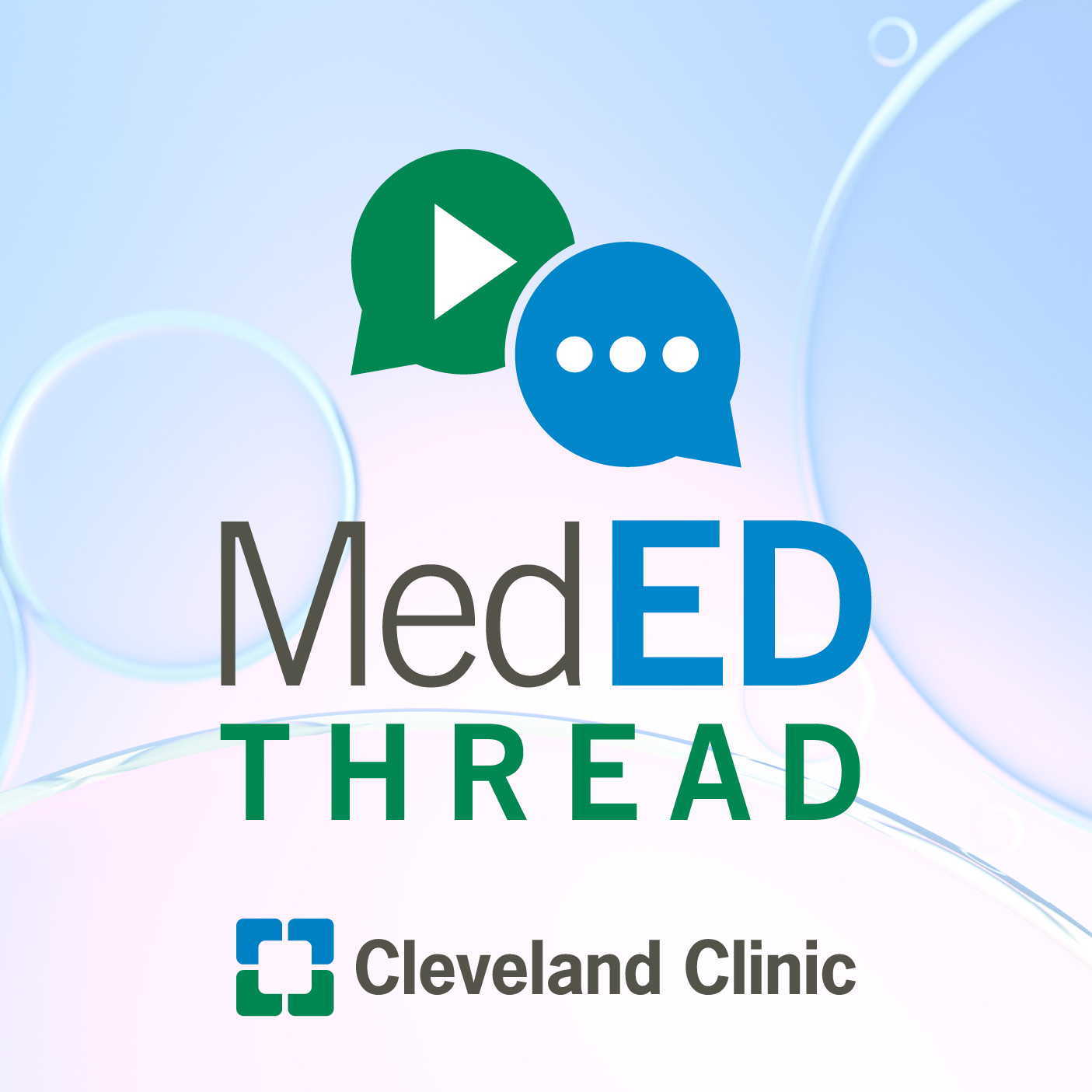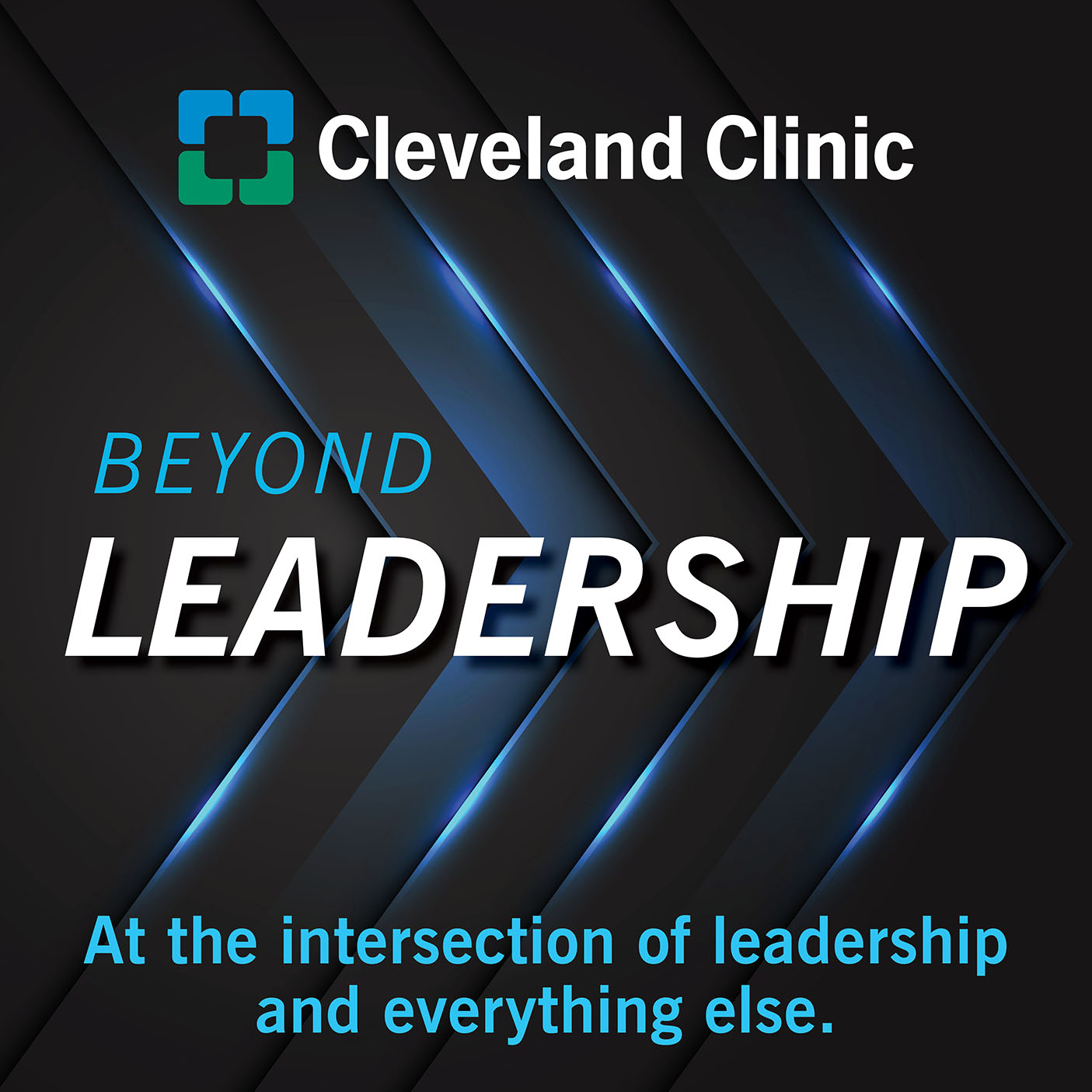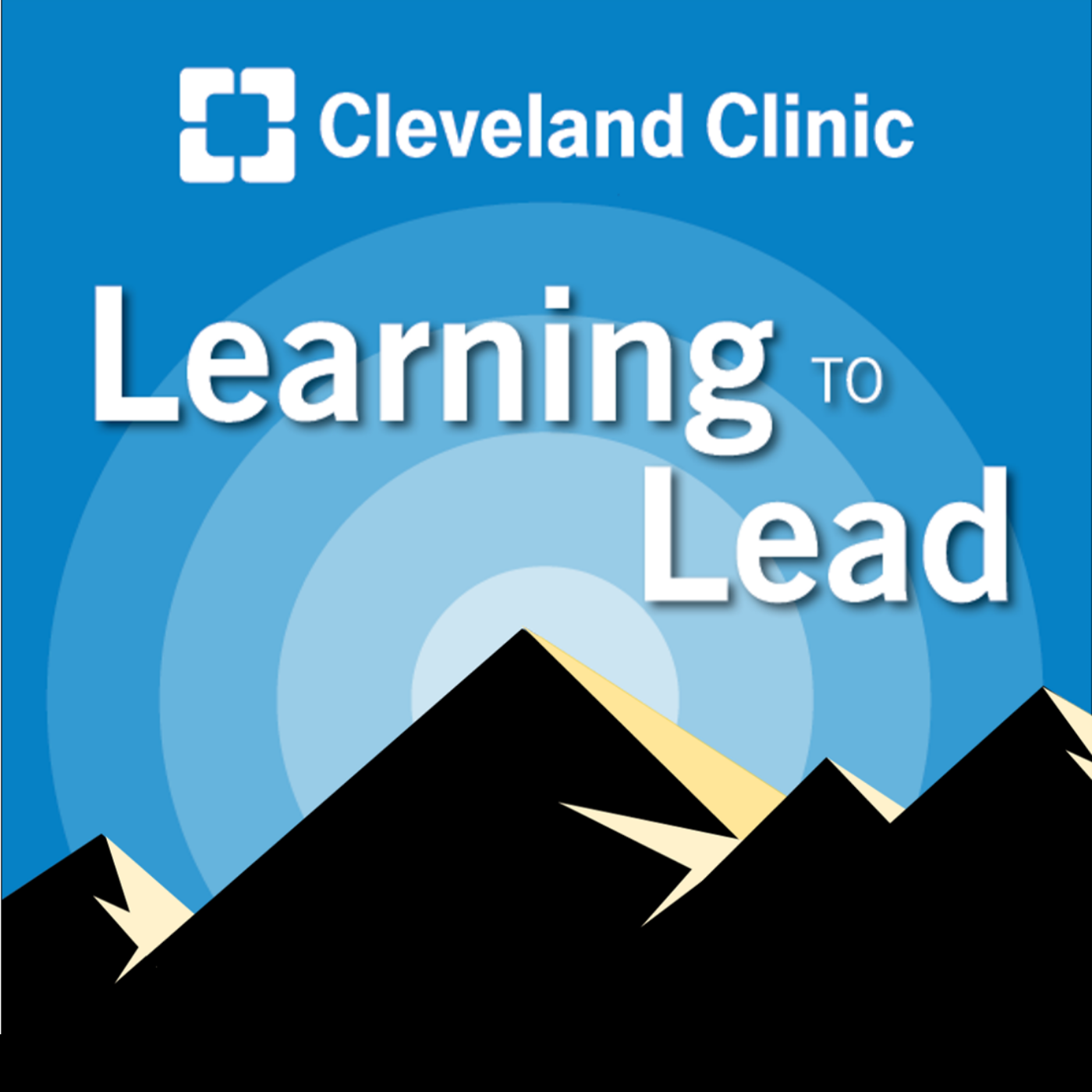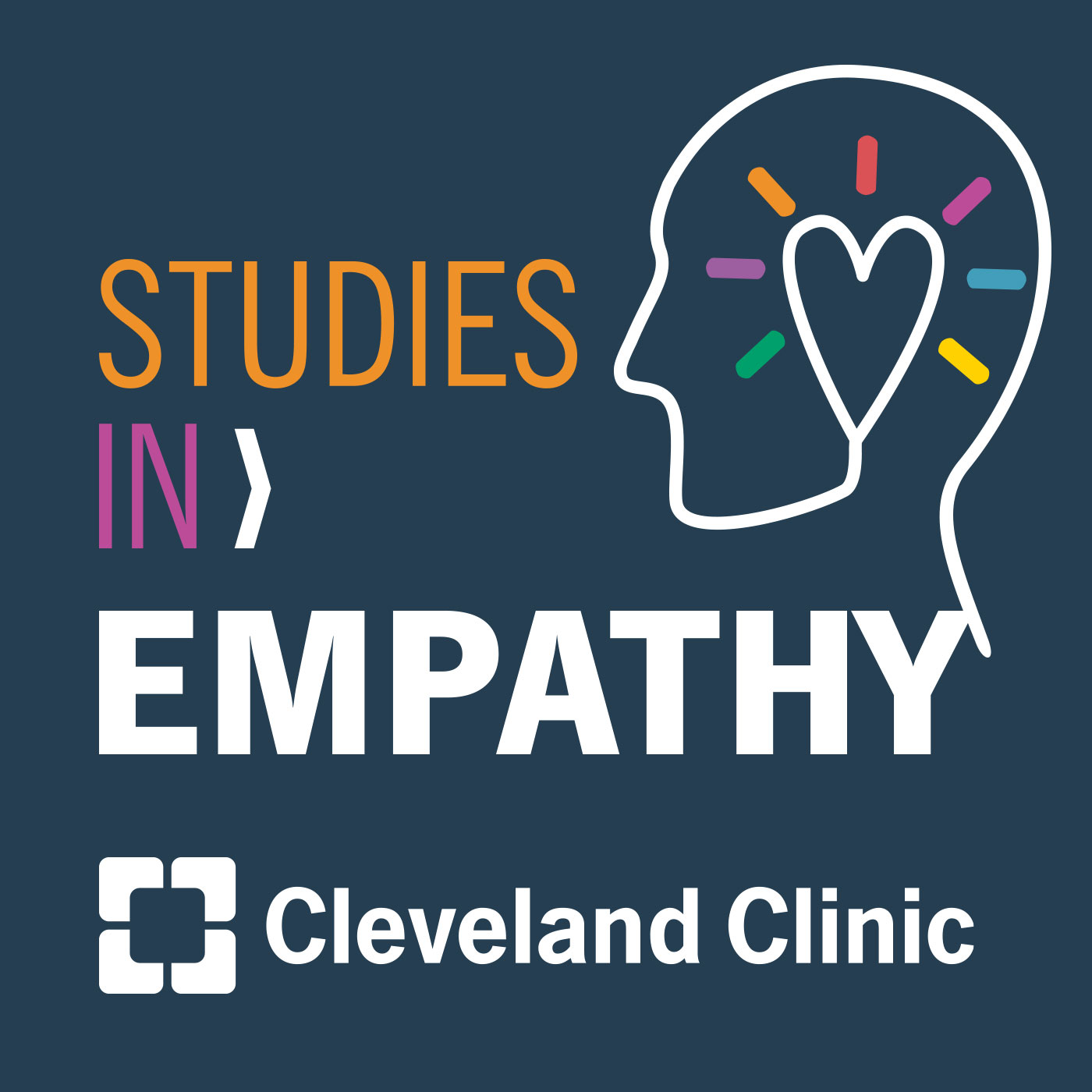Unlocking Tomorrow's Healthcare: A Deep Dive into the Discovery Accelerator
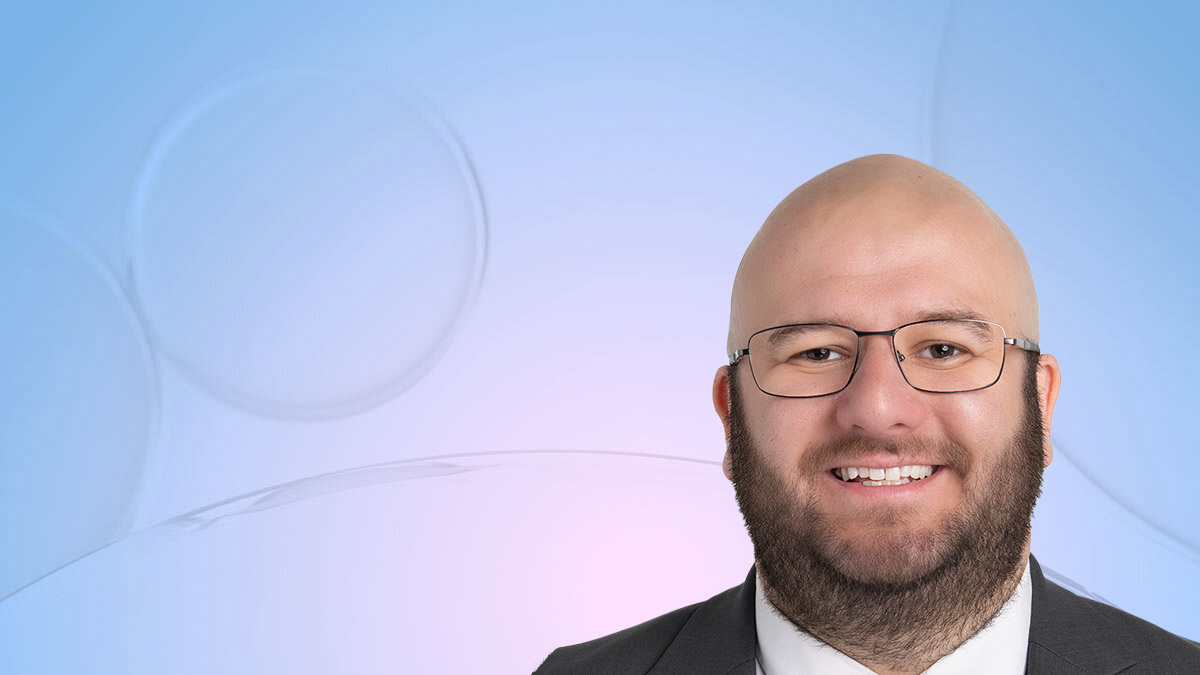
In this episode, we explore the groundbreaking collaboration between Cleveland Clinic and IBM by speaking with Brandon Musarra, Project Manager and Strategy & Operations Lead for the Discovery Accelerator. Brandon describes the transformative potential of the Discovery Accelerator program to revolutionize healthcare through cutting-edge technologies such as quantum computing and artificial intelligence.
Subscribe: Apple Podcasts | Podcast Addict | Spotify | Buzzsprout
Unlocking Tomorrow's Healthcare: A Deep Dive into the Discovery Accelerator
Podcast Transcript
Dr. James K. Stoller:
Hello, and welcome to MedEd Thread, a Cleveland Clinic Education Institute Podcast that explores the latest innovations in medical education and amplifies the tremendous work of our educators across the enterprise.
Dr. Tony Tizzano:
Hello, welcome to today's episode of MedEd Thread, an Education Institute Podcast, exploring the accelerated discovery for next generation caregivers grant project. I'm your host, Dr. Tony Tizzano, Director of Student and Learner Health here at Cleveland Clinic and Cleveland, Ohio. Today I am very pleased to have Brandon Musarra, project manager and strategy and operations lead for the Discovery Accelerator here to join us. Brandon, welcome to the podcast.
Brandon Musarra:
Thanks for having me, Tony.
Dr. Tony Tizzano:
So to get started, Brandon, please tell us a little bit about yourself, your educational background, what brought you to Cleveland and your role here at the Cleveland Clinic.
Brandon Musarra:
Sure. So I grew up in the epicenter of healthcare that is known as northeast Ohio. I'm sure we've all had our family experiences and what the epicenter of healthcare here can do. So I went to school originally wanting to be on the provider side, and I had a change of heart and I wanted to be on the healthcare administration and business side of the house. And with that, my tenure at Cleveland Clinic and surrounding health systems has allowed me to enable others through business partnerships and mainly digital health technologies.
Dr. Tony Tizzano:
So cutting edge like everything else at, at Cleveland Clinic.
Brandon Musarra:
Absolutely.
Dr. Tony Tizzano:
So in today's segment, we'll explore the Cleveland Clinic IBM Discovery Accelerator that will enable our renowned teams in collaboration with IBM's next generation technologies to make scientific discovery faster and to build a forward-looking digital infrastructure and help transform medicine, while training the workforce of the future and potentially growing our economy. This innovative partnership brings the first private quantum computer in the United States to Cleveland Clinic's main campus. So help us frame the idea of accelerated discovery and its potential impact on the scope of scientific discovery and innovation in healthcare.
Brandon Musarra:
Yeah. Thanks, Tony. So our Chief Research and Academic Officer, Dr. Serpil Erzurum, is very eloquent when she says that it takes about 17 years right now for something to get from what we say, bench to bedside. And so in 2024, bench to bedside 17 years, if we can throw our technology and our tools and our knowhow at that stat, that is what the Discovery Accelerator in partnership with IBM is hoping to accomplish. And it's a three part venture. It's AI, artificial intelligence, hybrid cloud, which is helping us with our bursting of storage needs with all the data that's generated. And quantum, which as you alluded to, is getting all the attention right now because it is truly the first quantum dedicated to healthcare and life sciences research. But between AI, hybrid cloud, and quantum, that's the three part way that Cleveland Clinic and IBM will partner to accelerate discovery.
Dr. Tony Tizzano:
Fabulous. There is so much jargon in this realm. So what is the Discovery Accelerator and what are its specific goals?
Brandon Musarra:
The Discovery Accelerator, Tony, aims to invest, enable, discover, educate, and promote. And so by way of the Cleveland Innovation District, IBM was one of the first big tech partners to really put pen to paper and sign on to this 10-year, 100 million plus partnership with us. And so in the spirit of innovation, we're hoping to tackle biomedical problems that otherwise would've taken decades into less than a decade, if not five years or less.
Dr. Tony Tizzano:
Well, that's incredible. And when you consider that and having to grapple with the doubling time of the, the medical lexicon in terms of research, it's just growing so fast. So within this partnership, you employ this quantum computer to do what?
Brandon Musarra:
Sure. So Tony, the quantum computing is a, is a relatively new phenomenon. The idea has been around for a while. Obviously quantum physics has been around and is being taught in our universities. However, quantum computing takes aim at intangible problems that the best supercomputer, also known as a binary classical computer that uses ones and zeros to compute. You put inputs in ones and zeros by way of your code and it gives you an output and it tries to connect the dots. With quantum, it's a whole new phenomenon. Quantum uses what's called qubits, and qubits can actually have those ones and zeros be on themselves. They can use the spherical nature of quantum physics to actually superimpose and what's called entangle the problem together.
So when you think about the optimized way of planning a clinical trial, one of the reasons it takes 17 years to get something from bench to bedside is because clinical trials take so long, whether it's the science, the regulation, and everything in between. So if you can employ quantum computing to actually get you a head start on recruiting the right amount of patients to recruit, the right type of patients, the diversity of patients, so that when you actually complete your clinical trial, you have everything you need in one clean slate. And so not saying that quantum computing is going to do it for you, but this is one of the many tools in our toolbox that can help take aim at such a problem.
Dr. Tony Tizzano:
So it's far more multidimensional it sounds like, in the, in the way you describe it, if I'm maybe oversimplifying. So what are the mission and vision of the Discovery Accelerator program?
Brandon Musarra:
Yeah. Thanks, Tony. So, you know, we are empowering our caregivers to learn new things. Our research clinicians, clinician scientists, we're empowering them to learn these new technologies so that they have more tools in their tool belt whereby they bring the clinical know-how and IBM brings the technical knowhow. And together two, three years in, we're seeing a beautiful merging of caregivers here. Now, what we hope to do by way of things like my accelerated discovery for next generation caregiver grant is train the workforce of the future.
Now, with my grant in summer of 2023, we actually started at the high school and middle school level, Tony. So we actually had 16 high schoolers come in on a summer day and learn about quantum computing. We studied in the Learner Research Institute Commons. They heard keynotes, they heard lectures from some of the most world renowned scientists. And in partnership with the Cleveland Metropolitan School District and Cleveland State University, again, in the spirit of building the Cleveland Innovation District, we were able to put on a full day seminar for those 16 kids. And Tony, I don't know about you, but you know, I would like those kids to be on my team if they're willing to give up a summer day to learn about quantum computing at 16, 17, 18 years old.
Dr. Tony Tizzano:
Well, you bet. I can see that. And you know, I could see the importance of getting off the ground with this so early because, you know, I listened to this and you know, I know these words, I'm not sure I could use them in a sentence. So how do you take our current cohort of caregivers here and introduce them to this technology in a way that they can see I, you know, I should be part of that?
Brandon Musarra:
Yeah. Now, as a provider yourself, Tony, you know that you can't just hand a technology to any clinician and expect them to be able to know how to use it. So although things like quantum and AI for research are not clinical technologies, yet, I'm sure you're already seeing this amongst you and your colleagues. You know, ChatGPT is taking our field by storm and the notion of machine learning. And so those are downstream clinical workflows, but we're talking at the research experimental level. So in the time that clinician scientists invest in research, aside from treating their patients and the amount of caregivers that we have in our Learner Research Institute right now that could use some of these tools, we wanna provide a learning journey for them.
So right now you can actually go to our learning management system and go in and take a, what's called the quantum learning journey. And so it'll take you some time, but it actually starts at the bare bones explaining what quantum computing is and what it's good for and to some level what it's not good for yet, and how you can apply that to your research.
Dr. Tony Tizzano:
And how do you see that being embraced at this point?
Brandon Musarra:
We've had a great uptick. So although the grant that I mentioned last summer talked about high schoolers, we're actually starting to build it into the university. So by way of our partnership with IBM, we have three partnerships with Cleveland State University, Kent State University, and Case Western Reserve University. And the three of them are the ones that will continue to offer data sciences degrees, certificates, et cetera. However, they can actually take those applied learnings and use them here with a biomedical use case. And so the idea would be that if you, yourself, as a caregiver of Cleveland Clinic can take that learning journey, whether it's AI, whether it's quantum, and apply that to a biomedical problem here. You know, you also have prestigious universities in the region at your disposal that you can learn more if that's something you wanted to pursue early, mid, and late career.
Dr. Tony Tizzano:
Fabulous. So I can see that there are a lot of working parts to trying to achieve these objectives. What are some of the essential components?
Brandon Musarra:
So the essential components really boiled down to how we structured ourselves, Tony. So you see announcements between big names all the time. You see the Cleveland Clinic and IBM and you think, how did they mobilize? This was just an idea. In 2019, 2020 we executed and we made an announcement in 2021 and we got started in the partnership in '22. And so really it's the way we structure. So we have an executive board, we have a steering committee filled with scientists, technology enablers at the enterprise level, as well as research compute level, and people that are actually working on projects themselves at Cleveland Clinic and IBM.
And so it's a trickle-down effect. 'Cause once you structure yourself in such a way where that steering committee can set the strategic direction for you, we're now empowering our researchers and our clinicians here to go out and actually do projects with us. So I'm happy to report that at the time of recording, we have upwards of 50 projects in our pipeline in two years. And every project we do with IBM is essentially a subcontract of the master. We call them statements of work. And so anytime you can templatize things and make things easier, that's how you mobilize and that's how you have more speed to business. So the idea is, you know, the faster we can get our clinicians and researchers to execute on their hypothesis without the contracting holding them up, that's what we aim to do.
Dr. Tony Tizzano:
Boy, that is just amazing to listen to you articulate all that. Can you provide us some examples of projects that you're currently working on?
Brandon Musarra:
Sure. So of those 50 projects, there's about 30 that are ongoing or have already completed. And we have another 20 in our pipeline that are either about to kick off or being staged. One of the projects that actually just got published is going after Immunotherapy in Cancer and how we can actually transform by way of using artificial intelligence, looking for new therapeutic drugs, new therapeutic candidates. And so that is one project in our pipeline there. Another project, Tony, is going after Alzheimer's disease. So looking at what's called a proprietary technology from IBM called Market Scan.
This researcher is actually partnering with IBM to take a look at all the different ways that one of the drugs that is hopefully going to be able to treat Alzheimer's disease someday and how that could be repurposed to other diseases. And another one that's getting a lot of attention now, and actually you saw this in the state of the clinic with Dr. Mihaljevic, is looking at lung cancer biomarkers. So right now we have a three-way partnership between Cleveland Clinic, IBM, and some companies who produce biomarker tests for a living. And they actually have partnered to use quantum computing to help identify lung cancer earlier. And that project's just getting off the ground as we speak.
Dr. Tony Tizzano:
So when we compare quantum computing, as you've described so far, and you look at high performance computing, how do they differ?
Brandon Musarra:
Sure. High performance computing and, and again Tony, I'm on the business side and not the technology and, and scientific side. However, high performance computing is very infrastructure heavy. You need to spin up more and more data centers, you need to purchase more compute and more raw hardware. With quantum, you're now able to actually unpack a problem in more segments. So the way I like to think about it, Tony, I use this layman's examples, when we give tours at Cleveland Clinic, there's this notion called the traveling salesman problem in business. And it's how can someone, salesman or woman get to the destination the quickest, but they have to stop at 20 different locations throughout the United States?
Well, with that, the quantum would tell you that there's a lot more variables than just the geographic distance in between all 20 of those locations. Quantum will actually help you understand how much tread is left on your tires, how much gas do you have in the tank, what's the wind speed using weather data, et cetera. So you said that it's multidimensional and that's spot on. So quantum will actually help you look for things that you otherwise were asking a, what we call now classical or high performance computer to do that might take that computer months, years. A quantum we're told can actually do that in days, weeks, a month.
Dr. Tony Tizzano:
Incredible. And does that fold into the equation artificial intelligence as well?
Brandon Musarra:
Yeah. So that's really going after that trifold effect we have, which is, you know, all these tools, you can't necessarily be found in a silo. So we're hoping, and we're very early, but when you go first at something, you get to figure out what's it good at and what's it not gonna be good at. So by way of things like government and private foundation grants, Tony, we're actually benchmarking use cases that quantum's gonna be good at. And the government was very happy to see that we are benchmarking that in partnership with them from a biomedical and clinical standpoint.
However, there's gonna be times that AI can solve your problem just fine, and AI will help the clinician downstream. And that has a tried and true effect in our business already, whereas quantum is still very nascent. And so what I'm getting at, Tony, is there might be a problem that you can solve with 80% certainty using artificial intelligence. So if you can make decisions on that comfortably, we can move forward, but maybe quantum can take that to the next level and get you closer to 90 or greater certainty.
Dr. Tony Tizzano:
So again, it's making huge strides in ways that time is not as critical as it was in the past. So when we look at these challenges in, for example, biomedical research and we look at drug discovery or clinical translation and bedside translation, what did those look like, and how is it impacting those areas?
Brandon Musarra:
Sure. So you have hit on several of our strategic areas of scientific priority. So whether it's drug discovery or enabling clinicians downstream or enabling their... the way they conduct or even structure their research, those are the things that are going to be byproducts of this partnership. So we are all in on drug discovery in partnership with big pharma someday, but that's not all. We also have a huge digital health portfolio right now. And what I mean by digital health are, some of the capabilities that IBM research has, the ability to monitor seizures better, the ability to analyze gait better, movement of our patients, et cetera, et cetera. So there's the digital health capabilities, but then there's also the quantum, and then there's also just raw power throwing hardware and an algorithm at a problem and tackling it that way. You don't always have to have a wearable, you don't have to have the patient linked to something.
And so it's really those three that we're going after. So I mentioned 50 projects, Tony, in our pipeline. How we collected those are what we call a call for proposals that we do quarterly. And we average about five per quarter just so far. So within that call for proposals, the Cleveland Clinic caregiver is partnered with an IBM researcher, and together the two of them write a statement of work, and that's how we get to the upwards of 50 in our pipeline. And that statement of work must fall into three strategic priorities, digital health, quantum computing, and more of a catchall accelerated discovery.
Dr. Tony Tizzano:
So you're really optimizing a process that we've had all along, but in a much more fast-paced manner. One of the words that you brought up, well, when you speak of wearables, that was one word that I, I'm not used to hearing. What does that mean?
Brandon Musarra:
Sure. So wearables can be anything from sending the patient home with some type of smart technology that eliminates the need for them to log. So you have that continuous data stream, whether it's pulse, blood pressure, heart rate, et cetera. Another version of a wearable could be the watches that we have on right now. So that watch is collecting your movement and think of a day where that watch can actually help your provider understand how you are walking and how you're exercising. And so that's what I mean by wearables, Tony, is taking technology that already exists, not always reinventing the wheel, but figuring out how that could have an automated stream of data to the clinicians.
Dr. Tony Tizzano:
So now, rather than have the Holter monitor with all its wires and so forth, for someone with a rhythm issues, you've got a bandaid sized thing that you put on your chest and can shower with and everything else.
Brandon Musarra:
That's the hope, Tony.
Dr. Tony Tizzano:
So, Brandon, as, as we look at the horizon in the kind of work you're doing, what lies in front of us?
Brandon Musarra:
So when it comes to some of the table stakes, we have artificial intelligence machine learning capabilities right now, there's a phenomenon known as foundation models. And foundation models are really taking our field by storm. They're taking a lot of fields by storm. And foundation models are just aggregating tons and tons of data and making decisions based on patterns that the technology can help us identify. Also known as machine learning. Quantum is gonna be a bit of a longer play. So there's this thing called quantum utility and quantum advantage. So our hope is by way of this 10-year partnership, Cleveland Clinic will be known for finding quantum advantage for biomedical use cases in partnership with the ecosystem of the Cleveland Innovation District that I mentioned. And that's where we can really take it to the next level.
Dr. Tony Tizzano:
That is absolutely astonishing. And, uh, I imagine through all of this, since much of this is new to me, there must be some points that you'd like to make or questions that I didn't ask that you'd like to tell to our audience.
Brandon Musarra:
Sure. So in my mind, when we go home at night and we tell people what we do for a living, I think we take it for granted that everyone keeps abreast of the next generation technologies. Prior to this podcast, did you have any idea what quantum computing was?
Dr. Tony Tizzano:
Not a bit (laughs). Not a qubit.
Brandon Musarra:
Not a qubit. You know, the other thing, Tony, is we hope that we continue to secure feedback from Cleveland Clinic caregivers on how we can make this partnership more and more an enterprise-wide asset. You know, I, I'll leave our listeners with, this is not just a research institute endeavor, although a lot of our projects might come out of the research institute, our long play is clinical translation. So if we can partner you with a clinical hypothesis with the right IBM researcher and we give you the infrastructure to succeed, we want to open this partnership up to be an enterprise-wide endeavor like it was meant to be.
Dr. Tony Tizzano:
Well, Brandon, thank you so much. This has been an absolutely fascinating episode of MedEd Thread, and I have a feeling we're gonna be hearing from you again because there's a lot going on. To our listeners, thank you very much for joining and we look forward to seeing you on our next podcast. Have a wonderful day.
Dr. James K. Stoller:
This concludes this episode of MedEd Thread, a Cleveland Clinic Education Institute podcast. Be sure to subscribe to hear new episodes via iTunes, Google Play, SoundCloud, Stitcher, Spotify, or wherever you get your podcasts. Until next time, thanks for listening to MedEd Thread and please join us again soon.
